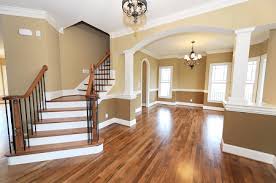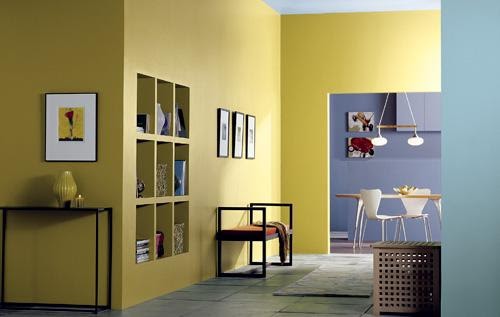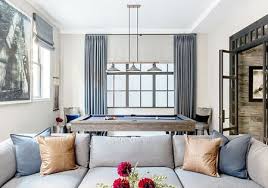CHOOSING INTERIOR PAINT COLORS
Choosing the colors on the inside of your home can be just as challenging as choosing your exterior colors and all the selections when building your brand new home! Painting your home takes time, hours of rolling paint, and money – so you’ll want to get it right the first time!
You can also do an extensive search online or even consult any professional painting company that can surely guide you in choosing interior paint colors. Though you may get confused it will be visible to take time and then confirm finally.
tips to keep in mind when choosing your interior paint colors –
Choosing Interior paint colors is easy:
The accurate way to choose the best interior paint colors is to start with the colors you adore. When you start with the colors you love, you are not bound by any sort of color scheme for a particular decorating style. Using your favorite color as your base color, you can use it to create a color scheme around it.You can try out different color combinations to get a vast range to decide according to your liking and requirement.
Find paint color inspiration:
Magazines and catalogs have always been the source of decorating inspiration. You have access to thousands of pages of inspiration on the internet. Retailer sites can be inspiring with their room designs and colors, and paint company sites can also show you ways to use color in your home. Social media sites such as Pinterest and Instagram offer color inspiration that is refreshed in real-time. Pinterest is great for creating inspiration boards for your favorite ideas, so you can keep all your ideas in one spot. These social media sites regularly upgrade themselves regarding paint colors, shades, etc. So, it is important to go with the present trend!
Create a Colour scheme:
There are inexpensive color tools that can generate color scheme ideas quickly. You also get a wheel turning where you can see how colors might relate to each other and learn the basics of color theory. At your favorite paint store, you can choose shades of those colors that you like. Many painting companies provide this facility for the customers, so they can choose according to their choice.
Paint color from a print:
One of the creative and different ways to choose interior paint colors is to start with a print fabric. If you are creating an accent wall, look to the boldest colors in the print. If you would like to choose a paint color that is more subtle or for a larger space, look at the color in the small details of your print fabric. Take a fabric swatch to the paint store so you can choose paint strips to view at home.
Find your Paint color in Artwork:
Interior designer expertise’s in choosing colors from artwork in your home. Most artists are masters of color and light, creating their color schemes for the related requirements. You can benefit from their selection perfection, by choosing colors from a favorite piece of art. You can also choose complementary colors from the same work of art to create a color scheme.Artwork provides a vast range to choose colors, shades, and designs that can also highlight your interior painting more creatively. This provides a different look for your dream home.

Before selecting a color
Ask yourself first what kind of look and feel you’d like your space to have. Color is a major player in creating atmosphere and transforming spaces. Warm colors, such as members of the red, orange and yellow families will create spaces that are welcoming, comforting and energizing. Cool colors, from the blue, green and purple families, make spaces that feel open, breezy and relaxing. Once you’ve chosen your color, select your color’s intensity level next. A color intensity is how bright or muted it is. Next, choose the color’s lightness level. Light colors open up rooms and dark colors will make your space feel more intimate and cozy. Observe how the color changes throughout the day and night. It may be necessary to alter lightness or intensity level of the color to best fit your space.

Common Color Mistakes
1. Being afraid.
The world is divided into two groups—the color courageous and the color cowardly. People who live in colorful interiors have gotten over the fear of making a mistake.” The best way to get over that fear is to always start with a color you love—from a rug, a painting, a fabric. Then test it on the wall. If it’s too strong, consider asking your paint store to formulate it at “half-strength” to lighten it or to tone it down by adding more gray.
2. Putting too much on the walls.
Be aware of the intensity of the colors in a room. If you have an Oriental rug with five or six strong colors, don’t paint the walls in equally strong hues. Let the rug be the focal point and the walls a lighter color.
3. Putting too little on the walls.
If you think your room is boring, look at it in terms of the 60-30-10 rule that designers employ: Sixty percent of the color in a space generally comes from the walls; 30 percent from upholstery, floor covering, or window treatments; and 10 percent from accent pieces, accessories, and artwork. Translation: Liven up those white walls.
4. Rushing the process.
The best way to find a color you can live with is to paint a 4-by-4-foot swatch on the wall and live with it for at least 24 to 48 hours so you can see it in natural and artificial light. “Taking the extra time to do the swatch test is worth it to find a color you’ll love living with for years.
5. Forgetting about primer.
When changing the color of a wall, primer (white or tinted) is vital to getting the actual color you picked out. Priming ensures there will be no interference from the previous wall color.

How to Pick Interior Color Schemes
Choosing a color combination for your home interior can be a challenge, but color also can be a powerful tool for transforming a plain space into a sensational environment. Here are some tips to get you started.
Consider Lighting
Pay attention to the impact of lighting. Color is a reflection of light, so the kind and amount of light in a room will have a significant impact on a color scheme. Experiment with how natural light or light from lamps or recessed fixtures affects color in fabrics, paint, furniture, and other surfaces. Daylight is considered the perfect light source because it has nearly uniform intensity over the entire visible spectrum of colors. Natural light changes from sunrise to sunset as the sun’s rays travel through varying amounts of atmosphere. When considering a color scheme for a particular room, spend some time in the space throughout the day, taking note of how the shifting light affects it. A room with only northern exposure, for example, receives less daylight than other rooms in the home. A warm color palette would be effective there to soften shadows, and it would react well to more hours of artificial light.
Committing to Color
While neutrals might seem safe, there are many benefits to using color in your home. Color can unite disparate styles of furnishings. It is also useful for renewing worn or outdated furniture. Nothing enlivens a traditional style more than a fresh and unexpected pop of color. Using color can also manipulate your sense of space. A small room can seem larger with light colors; a large room will shrink with a darker shade on the walls. You can visually lower a ceiling with a dark color and raise it with a light one.
Figure out what feeling you want to evoke
According to Woelfel, the first question you should ask yourself when picking out a new shade of paint for a room is “what type of feeling do I want to create in this space?” Consider how you want to feel in the room as well as how you want guests to feel. If you want the space to feel serene, your paint color choice might be much different than if you want the room to be energetic.
Examine the colors that are already in the room
Look around the room you want to paint and take note of colors that are already in the space. Consider what pieces of furniture and décor you definitely want to keep and make sure that your next choice of paint fits with the hues that will stay in the room.
Keep the purpose of the space in mind
The purpose of a room can help you pick out the perfect paint color. For instance, if you’re redecorating a kitchen you may want to think about whether you’ll spend most of your time in the room working, relaxing, or entertaining others. This can help guide your decision making.